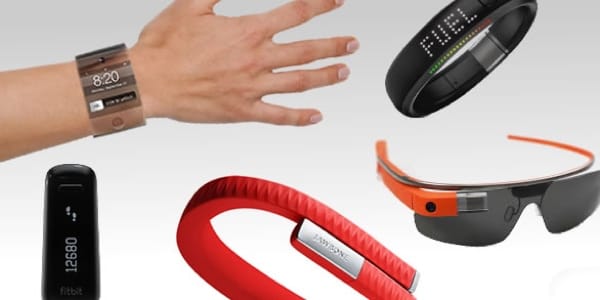News: Wearable Sales to Increase 18.4% in 2016

When I worked at British Telecom’s research division at Martlesham Heath, Suffolk back in 1996, several colleagues were involved in early wearables projects with the Massachusetts Institute of Technology (MIT) Media Lab. Thad Starner, one of most well known wearables researchers at MIT and closely involved with BT, later went on to play a key role in the Google Glass project.
Those were the early days of wearables, which seemed to comprise hi-tech eyewear and tiny computers and keyboards strapped to the body. There was of course much more to it than that, but the people involved recognised the potential of these uniquely personal electronic devices and were enthusiastic about the whole field.

Looking back twenty years, it seems that era really was the birth of wearables. Fast forward to today, and anyone with even the slightest interest in tech and mobile is probably familiar with the term “wearables”. Perhaps the ultimate personal computing device and wearable today is the smartphone; after all, most of us carry one around all day or kept not far from reach.
Today wearables of all shapes, sizes and types have become popular consumer items. Smartwatches, fitness trackers, personal health monitors, smart eyewear, intelligent clothing, virtual reality goggles and more are all experiencing rapid growth. So much so that Gartner estimates global sales will increase by 18.4 percent this year to 274.6 million devices, generating more than $28 billion in revenue.
Of that total, a sizeable $11.5 billion is estimated to come from smartwatches, the company recently said in its report “Forecast: Wearable Electronic Devices, Worldwide, 2016“.

“From 2015 through 2017, smartwatch adoption will have 48 percent growth largely due to Apple popularising wearables as a lifestyle trend. Smartwatches have the greatest revenue potential among all wearables through 2019, reaching $17.5 billion”, said Angela McIntyre, research director at Gartner.
“Of all the fitness wearables, sports watches will be the one product- category to maintain its average retail price over the next several years” McIntyre says.
“Race runners, cyclists and divers will choose sports watches over smartwatches because the user interface, capabilities and durability are tailored to the needs of an athlete in their sport”.
The Gartner report also says that head-mounted displays (HMDs, which includes virtual reality and augmented reality displays) are on of the up-and-coming markets, many of which stem from military projects. This year, HMDs will move into mainstream adoption for consumers and enterprise.
“New virtual reality HMDs for consumers, such as the HTC Vive, Oculus Rift, Sony PlayStation VR, and Microsoft HoloLens are expected to be available along with video games and entertainment content as well as business applications critical for their success“, said Brian Blau, research director at Gartner.



